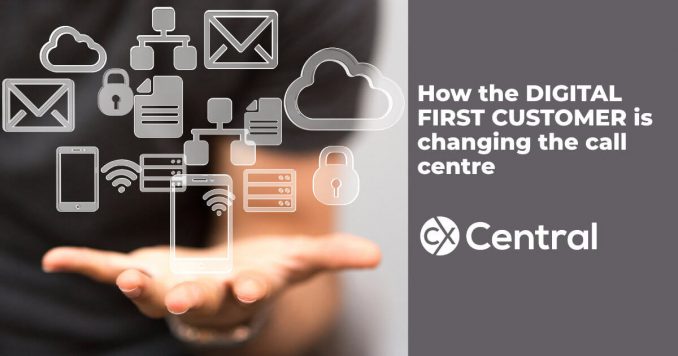
The business impact of the Digital-First customer
While this article was originally written in 2016 and published on customerthink.com, many of the sentiments and stats about the digital-first customer still ring true today in 2019.
In fact, very little appears to have changed with regards to the stats with my observation suggesting that the only change would be the increase in digital-first customers with most people looking for a solution online before resorting to a phone call.
If you are short on time, the article is summed up with the three-dot points below:
- In a pinch, the digital-first customer will still want to speak with a human (the contact centre);
- Customer interactions at the contact centre will increasingly address complex issues;
- And, the company’s response, will be critical to longer-term customer loyalty and retention.
The Digital-First customer
The immediacy, convenience, and ubiquity of the internet have forever changed customer behaviours and expectations.
Gartner has predicted that by 2020, 85% of all customer interactions will be digital.
Largely, customers today are ‘Digital-First’.
Digital First customers are well informed, omnichannel, and impatient.

While Digital-First customers use digital channels at the outset, turns out, digital channels are not a preference at all times.
In A Pinch, Digital-First Customers Still Prefer To Speak With A Person
The choice of channels depends upon the complexity of the issue the customer is trying to resolve.
The American Express Customer Service Barometer survey demonstrates that for issues of high complexity, the ‘digital-first’ customer wants to speak with a person who is empowered to solve their problem.

As complexity increases so does the propensity to speak with a ‘person’.
This transcends demographics although there are differences of channel preferences across demographics for issues of lower complexity.
For complex issues, while an in-person interaction is preferred by many, a conversation with an agent is still the most preferred option.
Today approximately 65% of all interactions with customers are through the contact centre with the remainder on digital channels.
Gartner expects this picture to change dramatically within a few short years – with only 15% customer interactions through voice channels.
A Fundamental Shift Is Underway
And as we transition to become more and more digital, contact centres will increasingly see a shift in the nature of customer interactions they support.
‘Digital first’ – well-informed, omnichannel, and impatient – customers prefer to self-serve at a time, place and method of their convenience.
However, if unable to address their need through self-service, they will contact the contact centre.
The customer expectation at this point in the journey is continuity of context or in other words the person addressing their call have an understanding of their history with the company, their current issue, and their activities on self-service channels prior to making the call into the contact centre.

Additionally, customers calling into the centres after exhausting all other means of resolution will likely be under emotional duress and anxious to get their issues addressed effectively and immediately.
Failure to resolve their problem to their expectations will have a direct impact on customer loyalty.
Of Contact Centres And Customer Loyalty
The Temkin Group’s research analysed the impact of a company’s response to a bad experience (product or service) on customer spending.
Research conducted in 2015 indicates that the impact of how a company responds to a bad experience is critical to future customer spending (as a measure of customer loyalty).
If a company’s response is considered ‘good’ by the customer there is a 33% increase in spending vs. only 2% for a response perceived as ‘bad’.
If a company’s response is ‘bad’ there is 65% of decreased spending vs. 24% for a good response to a bad experience.

Find specialist suppliers of contact centre and customer experience products and services including technology, consultants, outsourcers, training companies and more in our CX Directory.




Be the first to comment